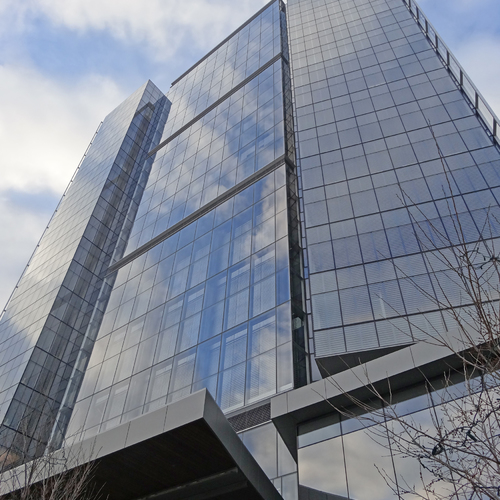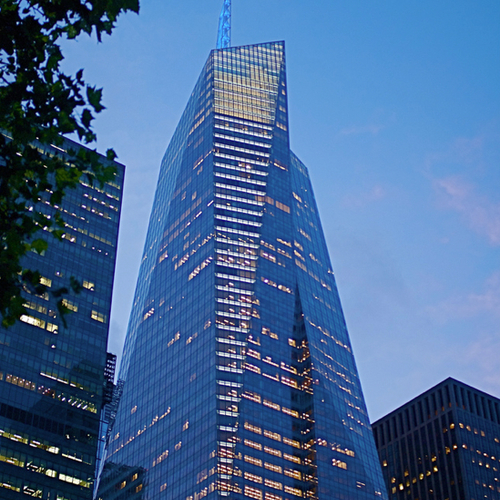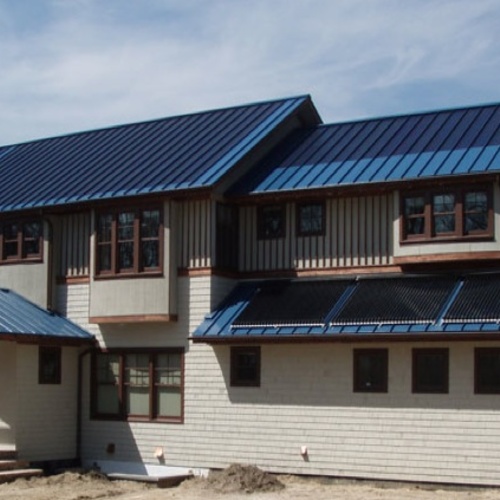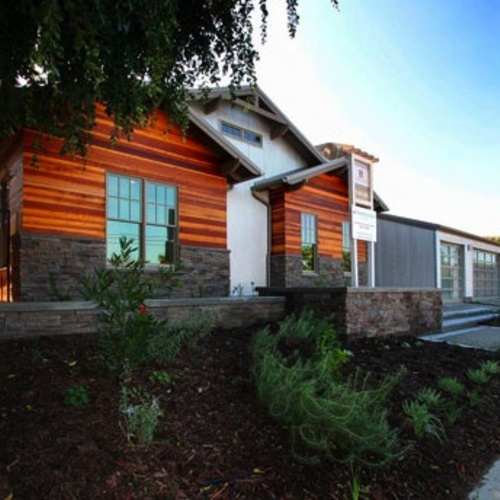Image Credit: Arup (image 1), Postgreen (images 2, 3, and 4)
Image Credit: Arup (image 1), Postgreen (images 2, 3, and 4) Developer Postgreen’s 100k House, in the East Kensington neighborhood of Philadelphia. The 100k House features 1,150 sq. ft. of interior space. Pictured here are Postgreen’s president, Chad Ludeman, his wife, Courtney, and their son, Teague. The 100k House construction costs ended up at less than $100 per square foot.
We were reminded of LEED for Homes’ geographic reach when projects half a world apart announced this month that they had earned Platinum ratings. Postgreen, the developer of a 1,150-sq.-ft. townhome called the 100k House and a 1,270-sq.-ft. home called the 120K House, both in the East Kensington neighborhood of Philadelphia, announced the achievement this week. The other project recently granted the Platimum rating, the Green Tomorrow house, is a 4,550-sq.-ft. showcase home built by Samsung C&T Corp. in South Korea’s Gyeonggi Province.
As we mentioned last spring, the 100k House was Philadelphia-based Postgreen’s attempt to build a green home, on an infill lot in the city, for $100,000 or less in construction costs. The project in fact came in at slightly less than $100 a square foot. Construction costs were comparable for the 120k House, which sold a year ago for $225,000.
Postgreen marketing chief Eric Darling notes in a recent blog that he and the company’s president, Chad Ludeman, learned plenty from their venture into cost-contained construction.
“While we have slightly increased our construction budget for future homes, we see this success as a key foundation of our long-term goals,” Darling wrote. “Did we make mistakes? Of course. Are there things we intend to do better/differently in the future? Naturally. … This milestone does not mark the end of the 100k project. We are currently gathering utility data and other long-term project results that we will be sharing in the near future. We continue to learn from this project as we move forward with our construction efforts, and we will use the lessons to constantly improve our building methods.”
Postgreen also is building a two-unit, two-story townhome to Passive House standards – 1,296 sq. ft. of interior space for each unit – which would be the first Passive House residence in the city. Click here for background on that project.
A prototype in South Korea
Design for the Green Tomorrow house – with a considerably larger footprint than what many green builders consider ideal – was led by Samoo Architects and its principal LEED consultant on the project, London-based Arup, which says Green Tomorrow operates at net zero energy and is the first home in East Asia to earn a Platinum rating.
The project clearly is designed as a high-profile forum for Samsung C&T green-home technologies and a lab for its other residential properties, whose energy use the company aims to reduce by 50% by 2013.
Arup says Green Tomorrow has 68 green features for zero-energy, zero-emission, and green IT, including a high-performance facade, daylight sensors, ground-source heat pumps, a radiant floor heating system, and a high-efficiency lighting system. Combined, these systems reduce energy consumption by 56%, Arup says. The other 44% of energy is provided a solar power system with a 1,753-sq.-ft. array. To help meet sustainability criteria, the company adds, 54.8% of the project’s construction waste was recycled, more than 20% of the materials used were from recycled sources, and more than 25% were sourced locally.
Weekly Newsletter
Get building science and energy efficiency advice, plus special offers, in your inbox.
















0 Comments
Log in or create an account to post a comment.
Sign up Log in